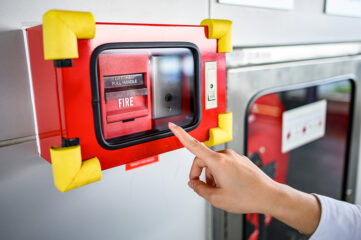Fires Are Not Uncommon in Assisted Living Facilities
West Palm Beach, a resident died due to a fire starting in his own room. Clearwater, over 40 units were damaged in an uncontrolled fire, displacing 50 residents. St. Petersburg, another resident dies due to a mysterious fire. All three of these Florida-based incidents took place in 2022, and they all could have been prevented with the proper fire safety equipment and evacuation protocols.
Fires are obviously a danger to anyone, but to those with mobility issues, like the elderly, they pose a far greater threat. Less resistant to the effects of smoke inhalation, slow to move, and labored by additional pains like hip issues or arthritis, they run the very real chance of requiring medical care or worse, and the facilities responsible for their safety will face the consequences.
Assisted Living Facilities Are Responsible for Almost Half the Fires in the Medical Industry

Harvey & Foote confirmed that in 2018, the most common sources of assisted facility fires were still from the kitchen and suggested that potential clients of these facilities should always ask about the fire safety situation before deciding on a retirement home. With safety already on the minds of potential customers, a robust fire defense system is expected, especially if their relative has habits that pose a fire risk, like smoking.
Dangers Other Than the Kitchen

There are also fire hazards the residents themselves bring to the table. With all the respect in the world for our venerable generation, the elderly sometimes do silly things, be it overloading an extension cord with appliances or repeatedly plugging in a neon sign known to spark. When left to themselves in their private rooms, it can be difficult to know which residents are being responsible and which are creating fire hazards.
What’s the Solution?

Fire Sprinklers & Smoke Alarms
Without a doubt, a responsible assisted living facility must have fire sprinklers and smoke alarms in every room. As the study showed, 7% of fires are caused by appliances, and many of those will be in the rooms of retirees.
A smoke alarm will alert the caretakers, and a sprinkler will stem, if not kill, the flame entirely before it has a chance to cause bodily harm to the resident or their neighbors. It also helps to have several fire extinguishers placed around the facility, so they can be procured quickly.
Fire Alarm Systems With Auto-dialing Functions
In case a fire proves too much for the sprinkler system, or there’s a malfunction of some kind, speed becomes key. The fire department must be alerted as soon as possible to rescue any residents trapped by flames and to reduce the damage caused by the fire to a bare minimum. It’s easy to panic in a fire situation, especially if it happens in the middle of the night when everyone’s disoriented.
An auto-dialing fire alarm system that immediately calls 911 when it detects an emergency could save valuable minutes that could mean the difference between life and death.
It’s Better to Be Safe Than Sorry

When the choice is between potential financial ruin and a one-time install and monthly fee, we feel the answer is obvious.

